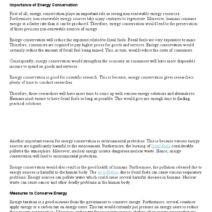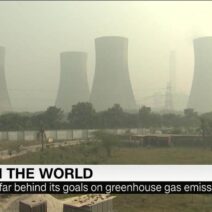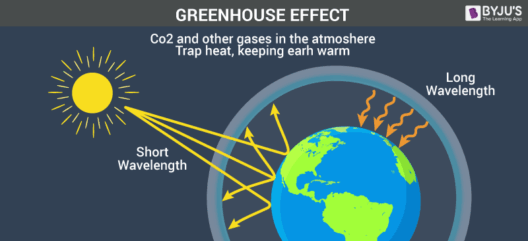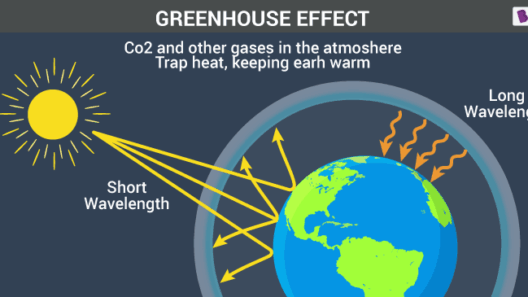In recent years, scenes of frigid temperatures and severe winter weather patterns have dominated the headlines, prompting some to question the validity of climate change and the theory of global warming. A common refrain heard during particularly harsh cold snaps is that these frigid conditions contradict the notion of an escalating global temperature. However, this perception warrants a more nuanced investigation into the intricate mechanics of our climate system. Understanding the broader implications of climate change requires an exploration of how weather and climate differ, alongside an assessment of the prevailing scientific consensus on these matters.
First, it is essential to delineate the distinction between weather and climate. Weather refers to short-term atmospheric conditions in a specific region, encompassing elements such as temperature, humidity, precipitation, and wind. Climate, on the other hand, pertains to long-term patterns and trends in temperature and other atmospheric conditions over extended periods, typically defined as 30 years or more. Consequently, a singular instance of sub-zero temperatures does not offer a comprehensive evaluation of climactic trends. Rather, one must examine the patterns over decades to ascertain how global warming manifests.
Notably, global warming does not imply a uniform increase in temperatures everywhere, at all times. Instead, it refers to the average rise in Earth’s temperatures, which can lead to myriad complex shifts within various meteorological systems. Paradoxically, as global temperatures rise, certain geographical areas may experience colder temps, often referred to as “weather whiplash.” This phenomenon is closely linked to changes in jet streams resulting from a warming Arctic. The polar vortex, for example, can become destabilized, allowing frigid Arctic air to plunge further south than usual and create unusually low temperatures in areas that might typically enjoy milder winters.
Moreover, the ramifications of climate change extend beyond mere temperature anomalies. The evidence of global warming encompasses a broad spectrum of empirical observations, including melting polar ice caps, rising sea levels, and increased frequency of extreme weather events. While it may be tempting to focus on short-lived cold spells as evidence against climate change, this selective perception overlooks the long-term shifts that present a more accurate portrayal of global conditions. Indeed, climate scientists have documented a steady increase in the overall global average temperature over the past century.
One of the more insidious aspects of climate change involves its influence on weather variability. As the planet warms, the atmosphere becomes increasingly capable of holding moisture—which could lead to intensified precipitation events in some regions while simultaneously creating drought conditions elsewhere. The result is a chaotic interplay of extreme weather patterns, including both droughts and floods, hot spells and cold snaps. Such variability is challenging for communities and ecosystems that must adapt to rapid changes—further underscoring why a simplistic reading of cold temperatures is insufficient as a measure of climate change.
Furthermore, examining the long-term data reveals a worrying trend: the planet’s average temperature is climbing, with scientists indicating that the last decade has been among the warmest on record. This escalation can be attributed largely to anthropogenic factors, particularly the burning of fossil fuels and industry-related greenhouse gas emissions. Addressing climate change necessitates a shift in perspective from isolated weather events to a comprehensive understanding of climate systems’ policies and implications.
One compelling element of the discussion around winter weather and climate change involves the thermal energy balance of the Earth. A warming atmosphere has broader repercussions than merely increasing surface temperatures; it precipitates changes in atmospheric and oceanic circulation patterns, influences precipitation distribution, and exacerbates natural disasters. Colder temperatures can coexist with overall long-term warming due to these complex feedback loops, reinforcing the notion that climate fluctuation stretches beyond immediate sensory experience.
Another key dimension to consider is the frequency and persistence of extreme weather events in light of ongoing climate change. An increase in the intensity and frequency of winter storms could paradoxically correspond with a warming planet. The technologies used to model climate change have shown us that greater evaporation, coupled with warmer air temperatures, leads to more moisture in storm systems, resulting in increased precipitation—whether in the form of rain or snow. As such, these extremes—both hot and cold—invigorate the discussion surrounding climate stability and underscore the importance of recognizing interconnected patterns over simplistic, isolated observations.
Ultimately, the assertion that freezing temperatures disprove global warming reflects a prevalent misinterpretation of the multifaceted dynamics underpinning our climate system. The occasional occurrence of harsh winter weather does not negate the broader trajectory of climate change; rather, it reveals the necessity of a comprehensive understanding of global systems. By embracing a holistic outlook that encompasses data, empirical observations, and scientific consensus, one can gain greater insight into the realities of climate change and its intricate impacts on our world.
To navigate the complexities of climate change, society must cultivate an informed public willing to engage with reputable science rather than falling prey to misinformation. The reality of global warming continues to present urgent challenges, prompting worldwide initiatives to mitigate unfavorable environmental outcomes. It is within this framework that perspectives can shift, urging action to protect our planet and its inhabitants. Embracing a forward-thinking mindset will be crucial in tackling the fundamental issues of climate change and preserving the Earth’s ecosystems for future generations.







